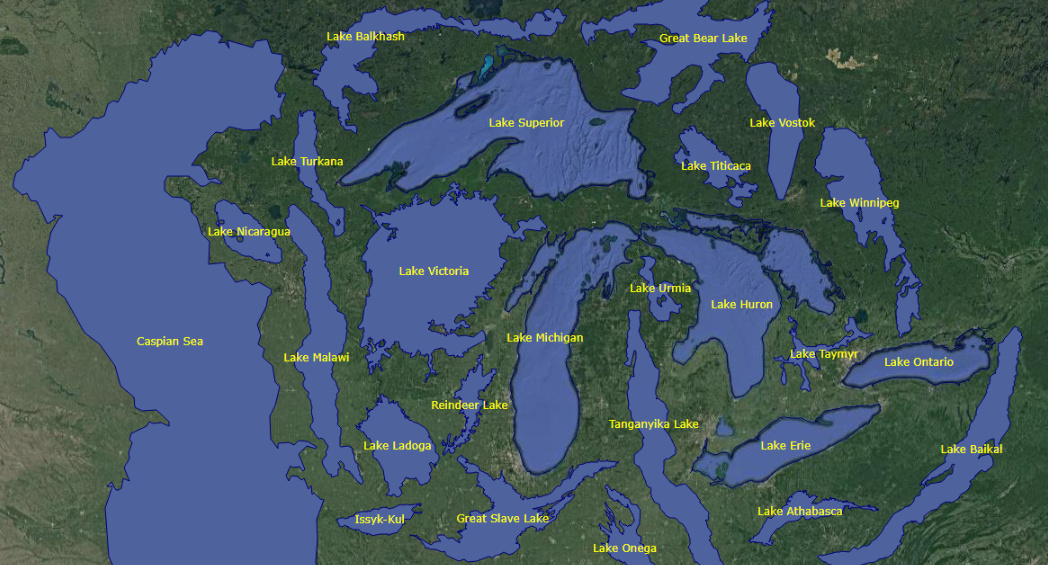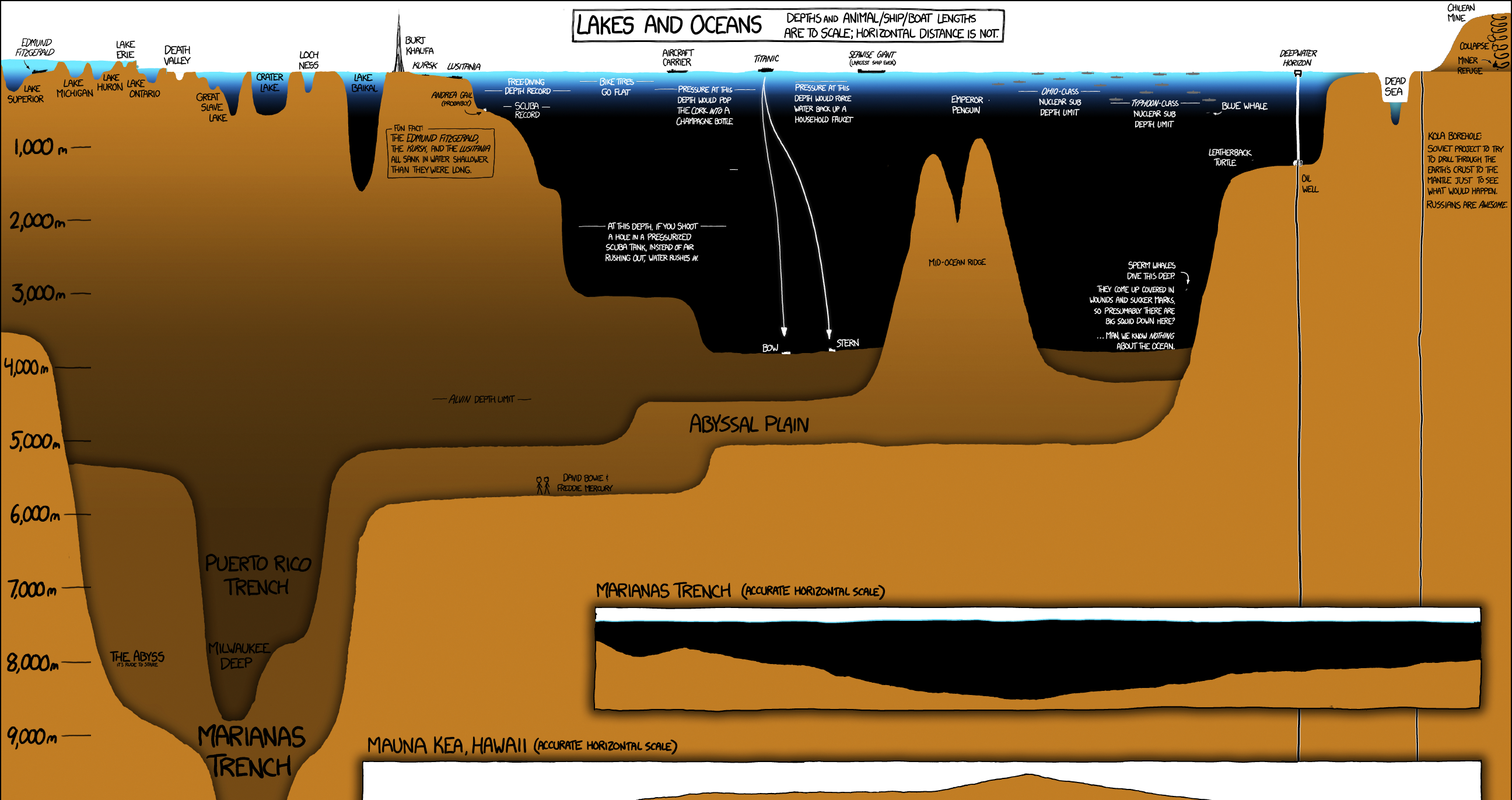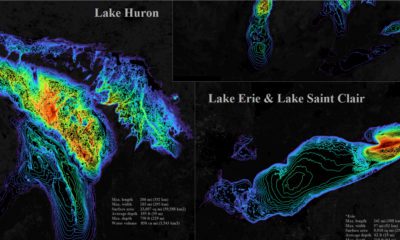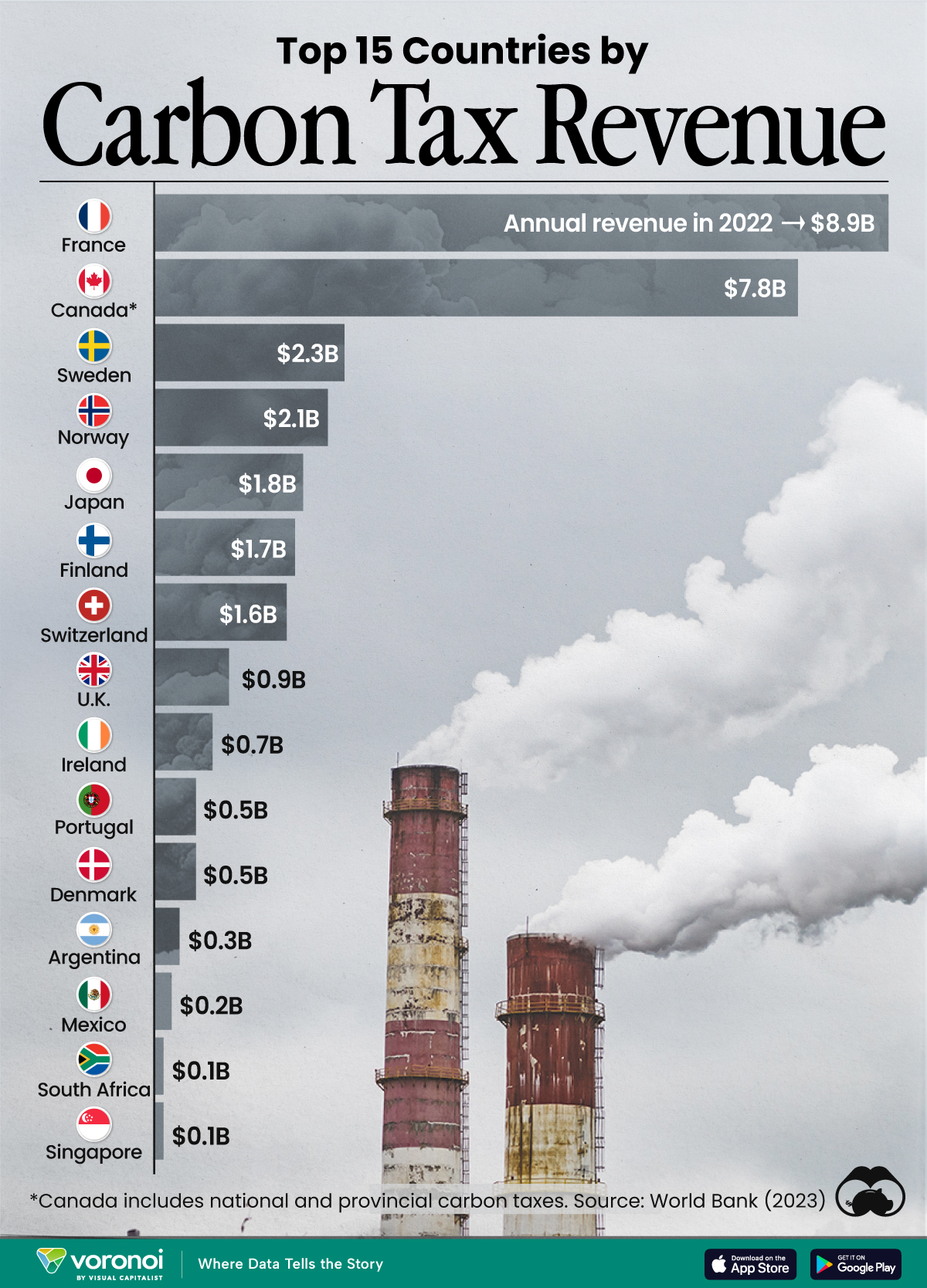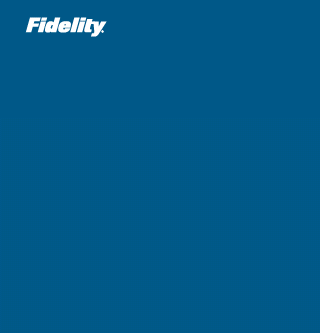Green
The World’s 25 Largest Lakes, Side by Side
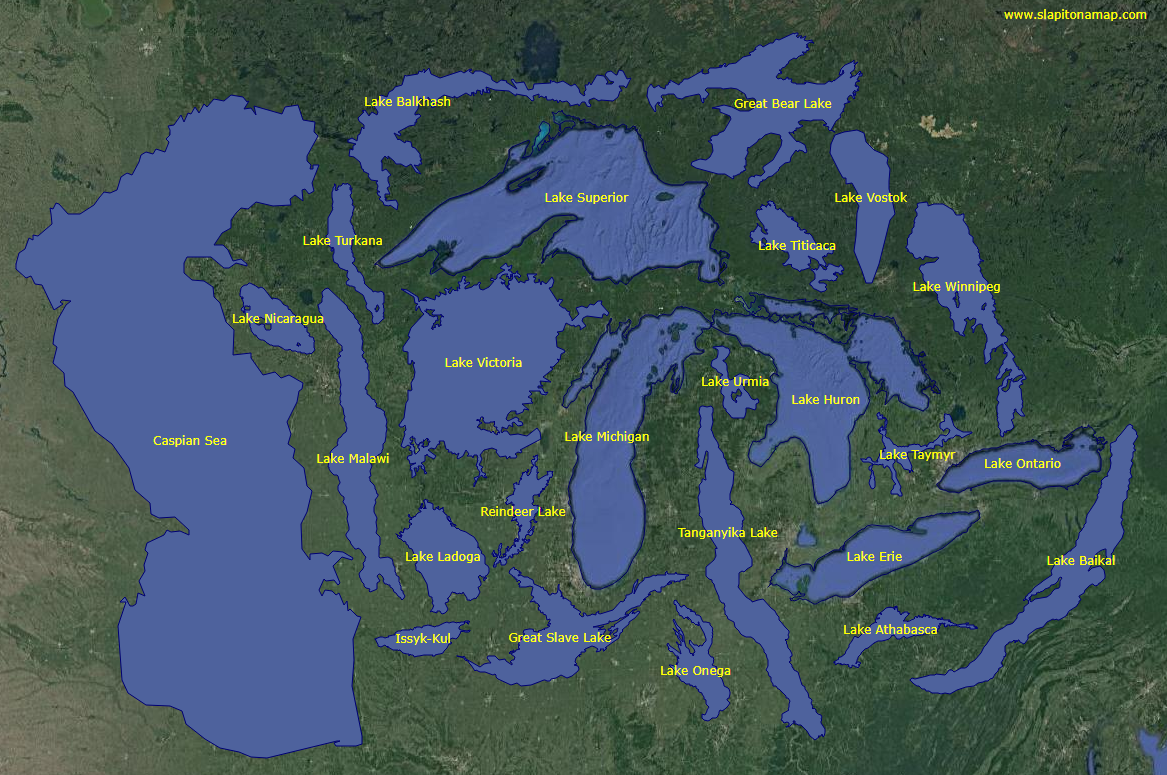
The World’s 25 Largest Lakes, Side by Side
In many parts of the world, you don’t have to look very far to find a lake.
According to satellite data, there are roughly 100 million lakes larger than one hectare (2.47 acres) to be found globally. The largest lakes, which rival the size of entire nations, are more of a rarity.
One might expect the world’s largest lakes to be very alike, but from depth to saline content, their properties can be quite different. As well, the ranking of the world’s largest lakes is far from static, as human activity can turn a massive body of water into a desert within a single generation.
Today’s graphic – created using the fantastic online tool, Slap It On A Map! – uses the Great Lakes region as a point of comparison for the largest 25 lakes, by area. This is particularly useful in comparing the scale of lakes that are located in disparate parts of the globe.
The Greatest Lakes
The largest lake in the world by a long shot is the Caspian Sea – a name that hints at a past when it was contiguous with the ocean around 11 million years ago. This massive saline lake, which is nearly the same size as Japan, borders five countries: Kazakhstan, Russia, Turkmenistan, Azerbaijan, and Iran. An estimated 48 billion barrels of oil lay beneath the surface of the basin.
The five Great Lakes, which run along the Canada–U.S. border, form one of the largest collections of fresh water on Earth. This interconnected series of lakes represents around 20% of the world’s fresh water and the region supports over 100 million people, roughly equal to one-third of the Canada–U.S. population.
Amazingly, a single lake holds as much fresh water as all the Great Lakes combined – Lake Baikal. This rift lake in Siberia has a maximum depth of 5,371ft (1,637m). For comparison, the largest of the Great Lakes (Lake Superior) is only 25% as deep, with a maximum depth of 1,333ft (406m). Lake Baikal is unique in a number of other ways too. It is the world’s oldest, coldest lake, and around 80% of its animal species are endemic (not found anywhere else).
Here’s a full run-down of the top 25 lakes by area:
| Rank | Lake Name | Surface Area | Type | Countries on shoreline |
|---|---|---|---|---|
| 1 | Caspian Sea | 143,000 sq mi (371,000km²) | Saline | 🇰🇿 Kazakhstan 🇷🇺 Russia 🇹🇲 Turkmenistan 🇦🇿 Azerbaijan 🇮🇷 Iran |
| 2 | Superior | 31,700 sq mi (82,100km²) | Freshwater | 🇨🇦 Canada 🇺🇸 U.S. |
| 3 | Victoria | 26,590 sq mi (68,870km²) | Freshwater | 🇺🇬 Uganda 🇰🇪 Kenya 🇹🇿 Tanzania |
| 4 | Huron | 23,000 sq mi (59,600km²) | Freshwater | 🇨🇦 Canada 🇺🇸 U.S. |
| 5 | Michigan | 22,000 sq mi (58,000km²) | Freshwater | 🇺🇸 U.S. |
| 6 | Tanganyika | 12,600 sq mi (32,600km²) | Freshwater | 🇧🇮 Burundi 🇹🇿 Tanzania 🇿🇲 Zambia 🇨🇩 D.R.C. |
| 7 | Baikal | 12,200 sq mi (31,500km²) | Freshwater | 🇷🇺 Russia |
| 8 | Great Bear Lake | 12,000 sq mi (31,000km²) | Freshwater | 🇨🇦 Canada |
| 9 | Malawi | 11,400 sq mi (29,500km²) | Freshwater | 🇲🇼 Malawi 🇲🇿 Mozambique 🇹🇿 Tanzania |
| 10 | Great Slave Lake | 10,000 sq mi (27,000km²) | Freshwater | 🇨🇦 Canada |
| 11 | Erie | 9,900 sq mi (25,700km²) | Freshwater | 🇨🇦 Canada 🇺🇸 U.S. |
| 12 | Winnipeg | 9,465 sq mi (24,514km²) | Freshwater | 🇨🇦 Canada |
| 13 | Ontario | 7,320 sq mi (18,960km²) | Freshwater | 🇨🇦 Canada 🇺🇸 U.S. |
| 14 | Ladoga | 7,000 sq mi (18,130km²) | Freshwater | 🇷🇺 Russia |
| 15 | Balkhash | 6,300 sq mi (16,400km²) | Saline | 🇰🇿 Kazakhstan |
| 16 | Vostok | 4,800 sq mi (12,500km²) | Freshwater | 🇦🇶 Antarctica |
| 17 | Onega | 3,700 sq mi (9,700km²) | Freshwater | 🇷🇺 Russia |
| 18 | Titicaca | 3,232 sq mi (8,372km²) | Freshwater | 🇧🇴 Bolivia 🇵🇪 Peru |
| 19 | Nicaragua | 3,191 sq mi (8,264km²) | Freshwater | 🇳🇮 Nicaragua |
| 20 | Athabasca | 3,030 sq mi (7,850km²) | Freshwater | 🇨🇦 Canada |
| 21 | Taymyr | 2,700 sq mi (6,990km²) | Freshwater | 🇷🇺 Russia |
| 22 | Turkana | 2,473 sq mi (6,405km²) | Saline | 🇰🇪 Kenya 🇪🇹 Ethiopia |
| 23 | Reindeer Lake | 2,440 sq mi (6,330km²) | Freshwater | 🇨🇦 Canada |
| 24 | Issyk-Kul | 2,400 sq mi (6,200km²) | Saline | 🇰🇬 Kyrgyzstan |
| 25 | Urmia | 2,317 sq mi (6,001km²) | Saline | 🇮🇷 Iran |
The Great Lakes World Tour
For people living in Canada and the U.S., the shape and relative size of the Great Lakes system may be quite familiar. This makes the Great Lakes a fantastic point of comparison to help put the size of other world locations into perspective. To this end, we begin our Great Lakes World Tour.
First, the image below shows how the Great Lakes system would look if it was located in India.
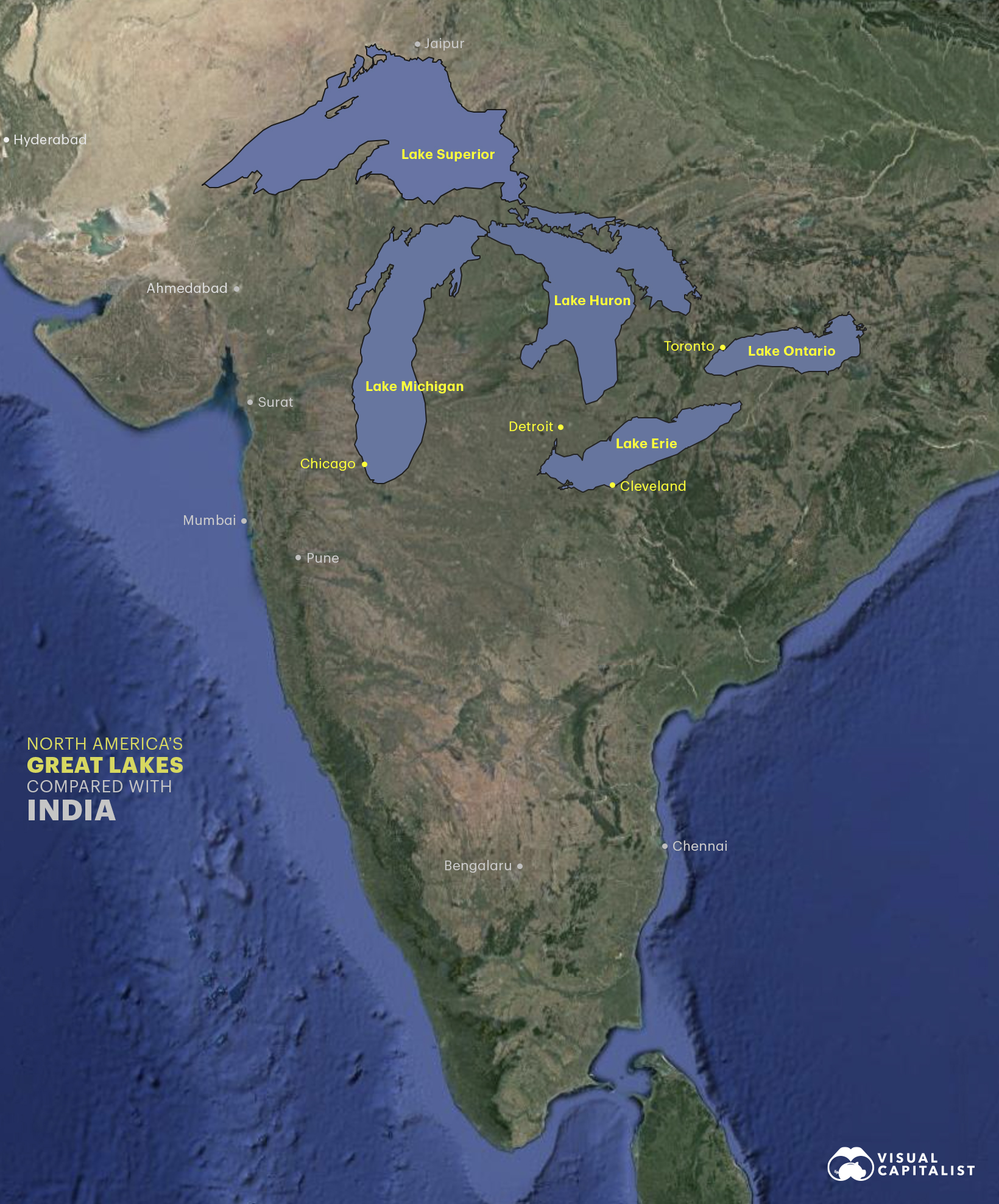
Distortions on commonly used maps can downplay the size of India compared to more northern nations. This view of the Great Lakes can help put India’s true size into perspective.
Next, we look at the Great Lakes overlaid within Central Europe.
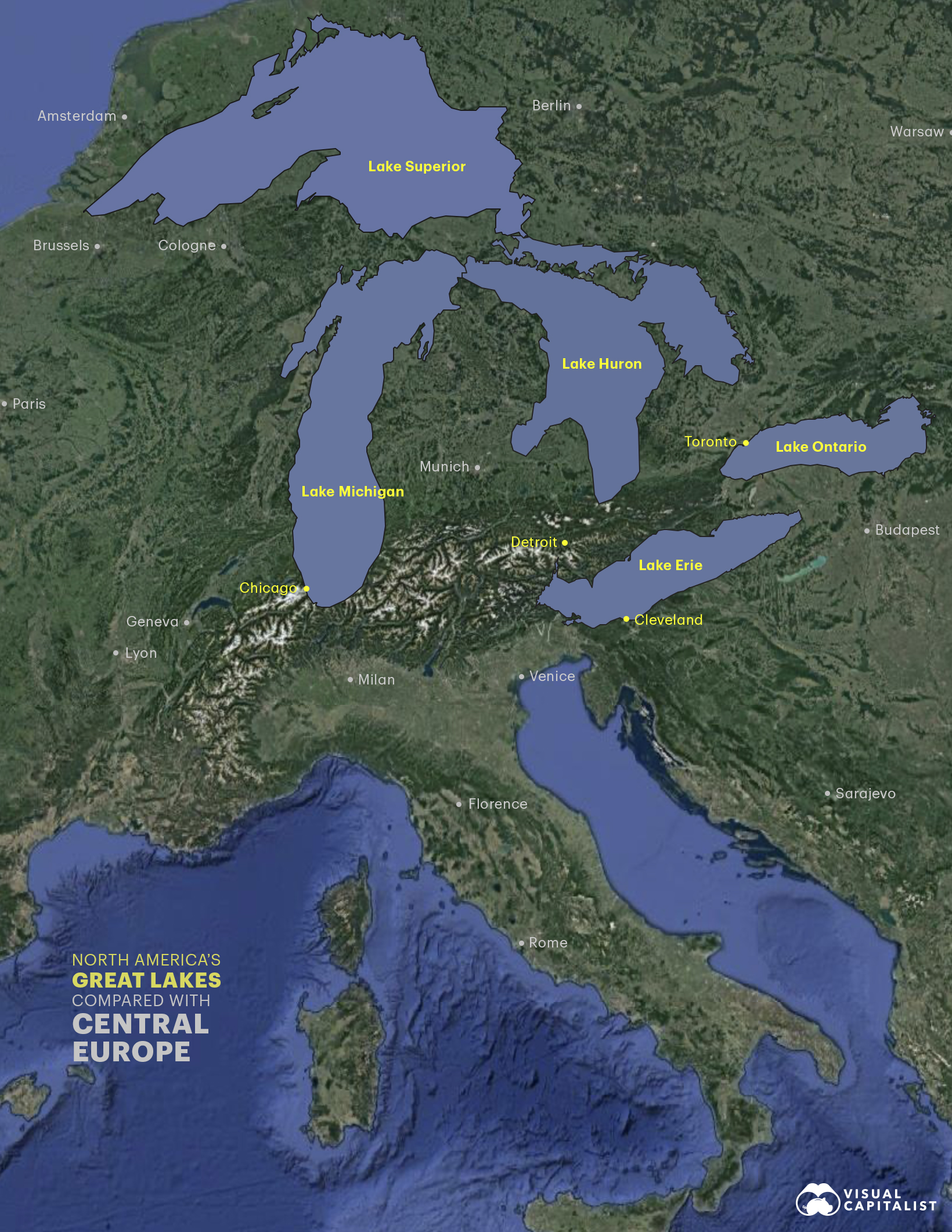
In the context of Europe, the lakes are so large that they extend from the Netherlands over to Slovakia. Lake Superior’s surface area of 31,700 mi2 (82,000 km2), is similar in size to Austria. Here’s are the five Great Lakes and European countries of equivalent size:
| Great Lakes | Surface Area | Equivalent Country | Area |
|---|---|---|---|
| Lake Superior | 82,000 km2 (31,700 sq mi) | 🇦🇹 Austria | 83,879 km2 (32,386 sq mi) |
| Lake Huron | 60,000 km2 (23,000 sq mi) | 🇱🇻 Latvia | 64,589 km2 (24,938 sq mi) |
| Lake Michigan | 58,000 km2 (22,300 sq mi) | 🇭🇷 Croatia | 56,594 km2 (21,851 sq mi) |
| Lake Erie | 25,700 km2 (9,910 sq mi) | 🇲🇰 North Macedonia | 25,713 km2 (9,928 sq mi) |
| Lake Ontario | 19,000 km2 (7,340 sq mi) | 🇸🇮 Slovenia | 20,271 km2 (7,827 sq mi) |
Lastly, here is a look at the Great Lakes in Southern Australia. Australia is the world’s 6th largest country, so the Great Lakes only occupy one corner of its land mass.
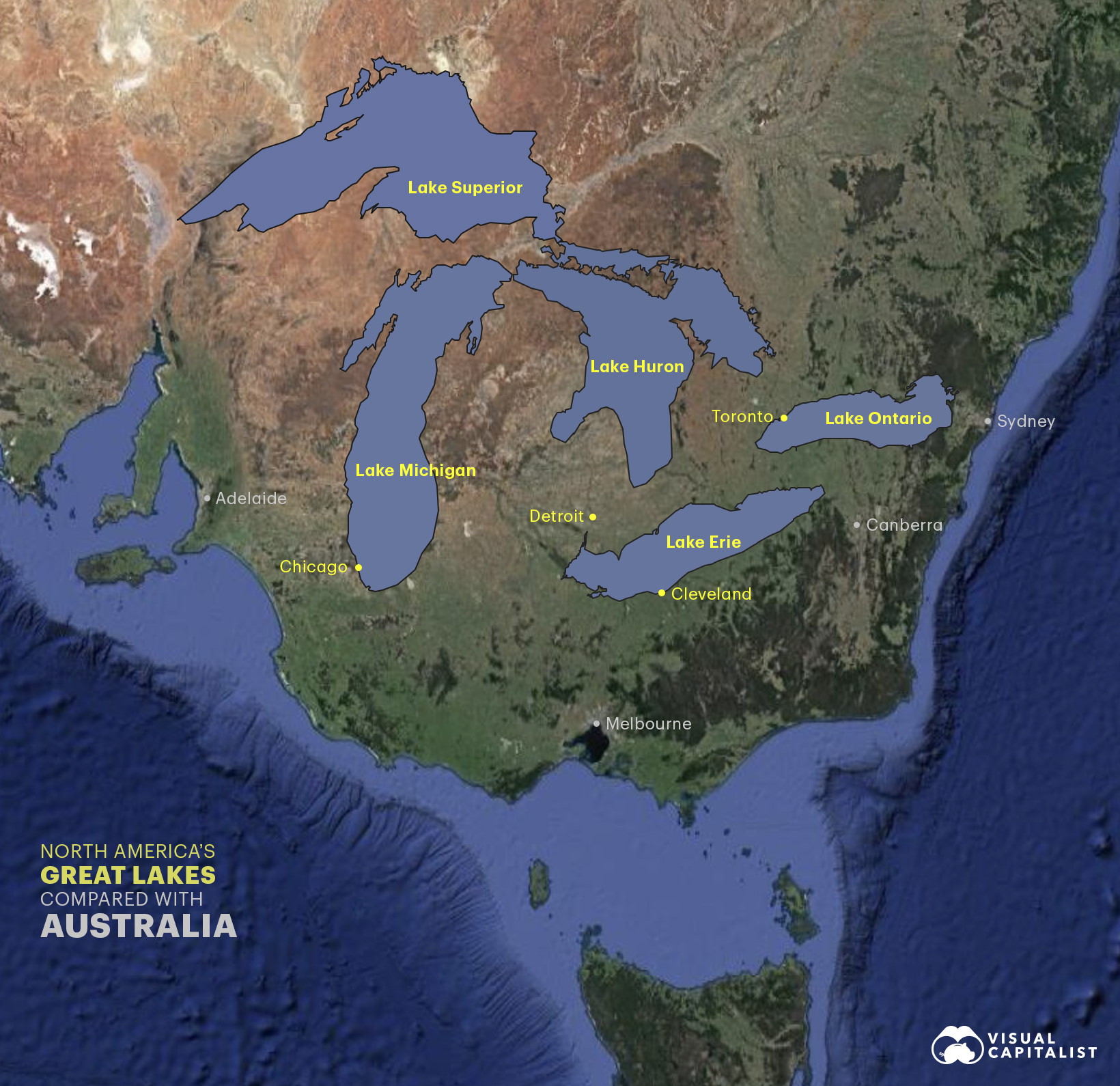
Australia’s lack of glacial history means that there are few permanent freshwater lakes in the country. Many of the country’s largest lakes only fill up during periods of excessive rainfall.
Shrinking out of the rankings
Not far from the world’s largest lake, straddling the border between Kazakhstan and Uzbekistan, lay the sand dunes of the Aralkum Desert. In the not so distant past, this harsh environment was actually the bed of one of the largest lakes in the world – the Aral Sea.
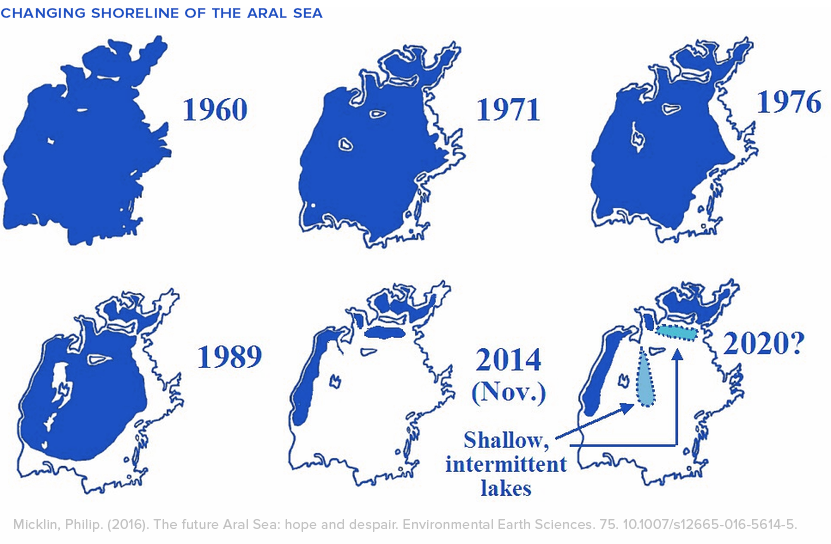
For reasons both climatic and anthropogenic, the Aral Sea began receding in the 1960s. This dramatic change in surface area took the Aral Sea from the fourth largest lake on Earth to not even ranking in the top 50. Researchers note that the size of the lake has fluctuated a lot over history, but through the lens of modern history these recent changes happened rapidly, leaving local economies devastated and former shoreside towns landlocked.
Lake Chad, in Saharan Africa, and Lake Urmia, in Iran, both face similar challenges, shrinking dramatically in recent decades.
How we work to reverse damage and avoid ecosystem collapse in vulnerable lakes will have a big influence on how the top 25 list may look in future years.
Green
Ranking the Top 15 Countries by Carbon Tax Revenue
This graphic highlights France and Canada as the global leaders when it comes to generating carbon tax revenue.
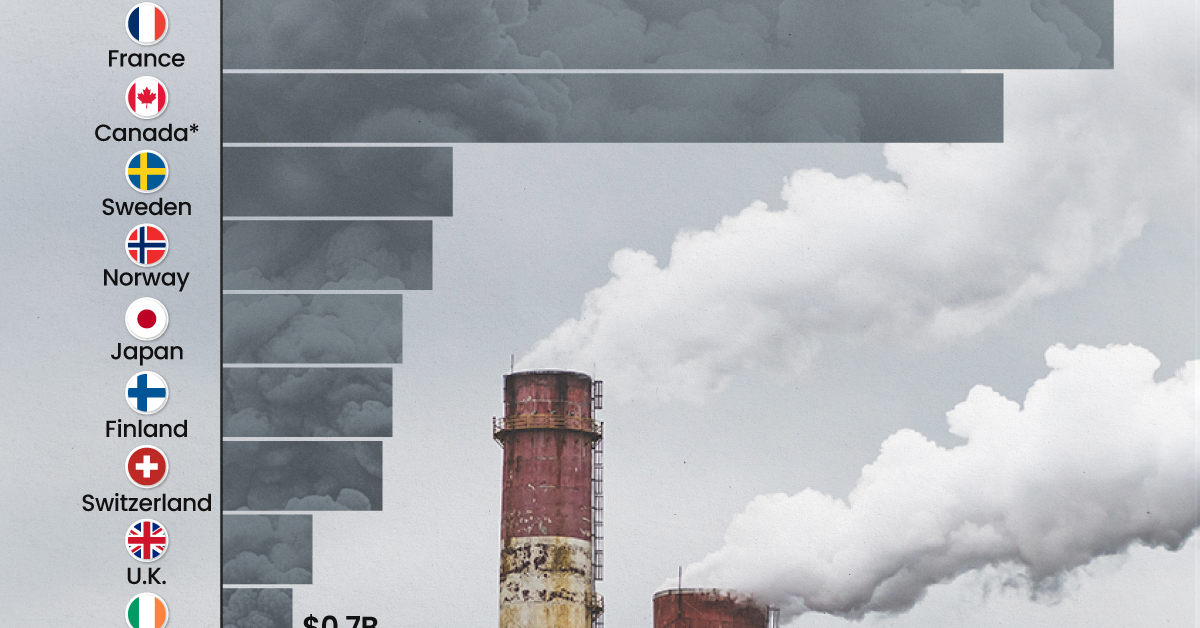
Top 15 Countries by Carbon Tax Revenue
This was originally posted on our Voronoi app. Download the app for free on iOS or Android and discover incredible data-driven charts from a variety of trusted sources.
Carbon taxes are designed to discourage CO2 emissions by increasing the cost of carbon-intensive activities and incentivizing the adoption of cleaner energy alternatives.
In this graphic we list the top 15 countries by carbon tax revenue as of 2022. The data is from the World Bank’s State and Trends of Carbon Pricing Report, published in April 2023.
France and Canada Lead in Global Carbon Tax Revenue
In 2022, the top 15 countries generated approximately $30 billion in revenue from carbon taxes.
France and Canada lead in this regard, accounting for over half of the total amount. Both countries have implemented comprehensive carbon pricing systems that cover a wide range of sectors, including transportation and industry, and they have set relatively high carbon tax rates.
| Country | Government revenue in 2022 ($ billions) |
|---|---|
| 🇫🇷 France | $8.9 |
| 🇨🇦 Canada | $7.8 |
| 🇸🇪 Sweden | $2.3 |
| 🇳🇴 Norway | $2.1 |
| 🇯🇵 Japan | $1.8 |
| 🇫🇮 Finland | $1.7 |
| 🇨🇭 Switzerland | $1.6 |
| 🇬🇧 United Kingdom | $0.9 |
| 🇮🇪 Ireland | $0.7 |
| 🇩🇰 Denmark | $0.5 |
| 🇵🇹 Portugal | $0.5 |
| 🇦🇷 Argentina | $0.3 |
| 🇲🇽 Mexico | $0.2 |
| 🇸🇬 Singapore | $0.1 |
| 🇿🇦 South Africa | $0.1 |
In Canada, the total carbon tax revenue includes both national and provincial taxes.
While carbon pricing has been recognized internationally as one of the more efficient mechanisms for reducing CO2 emissions, research is divided over what the global average carbon price should be to achieve the goals of the Paris Climate Agreement, which aims to limit global warming to 1.5–2°C by 2100 relative to pre-industrial levels.
A recent study has shown that carbon pricing must be supported by other policy measures and innovations. According to a report from Queen’s University, there is no feasible carbon pricing scenario that is high enough to limit emissions sufficiently to achieve anything below 2.4°C warming on its own.
-

 Maps2 weeks ago
Maps2 weeks agoMapped: Average Wages Across Europe
-

 Money1 week ago
Money1 week agoWhich States Have the Highest Minimum Wage in America?
-

 Real Estate1 week ago
Real Estate1 week agoRanked: The Most Valuable Housing Markets in America
-

 Markets1 week ago
Markets1 week agoCharted: Big Four Market Share by S&P 500 Audits
-

 AI1 week ago
AI1 week agoThe Stock Performance of U.S. Chipmakers So Far in 2024
-

 Automotive1 week ago
Automotive1 week agoAlmost Every EV Stock is Down After Q1 2024
-

 Money2 weeks ago
Money2 weeks agoWhere Does One U.S. Tax Dollar Go?
-

 Green2 weeks ago
Green2 weeks agoRanked: Top Countries by Total Forest Loss Since 2001

